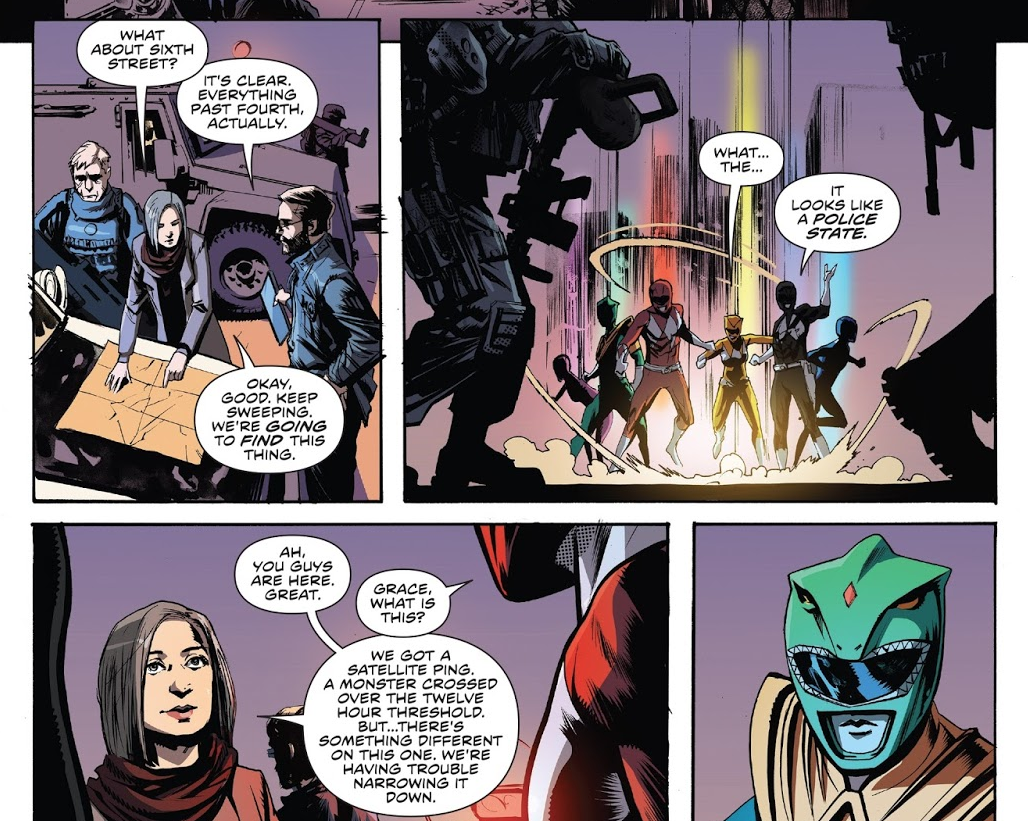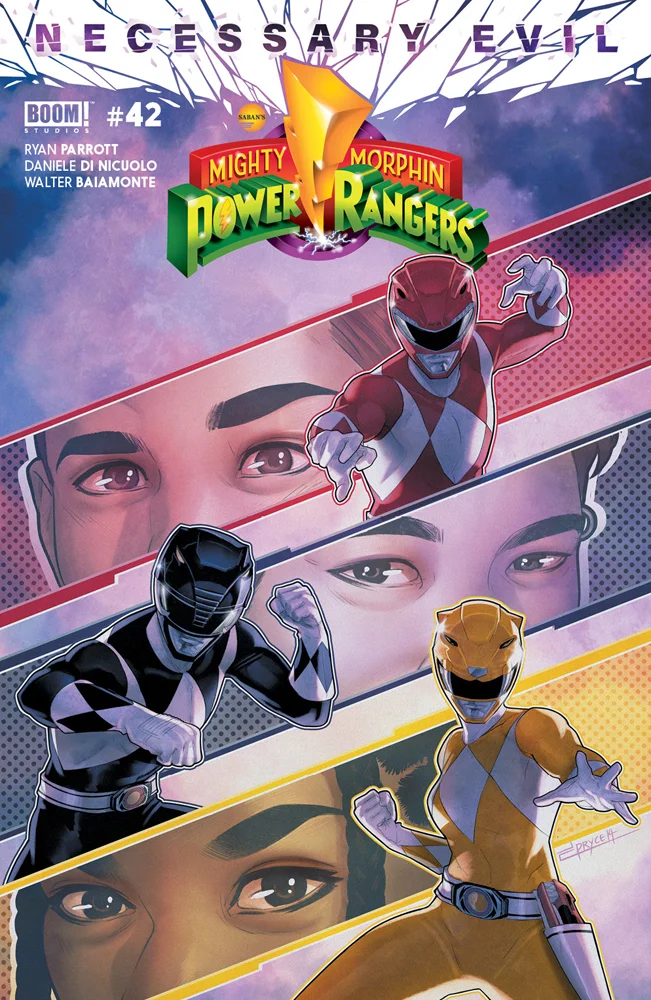Mighty Morphin Power Rangers #23 Review
It has been 2 years since Boom! Studios released the first comic related to the Power Rangers franchise, after acquiring the licensing rights to the series in 2016. In that time we have had two ongoing side by side books, two annuals, a mini-series dedicated to Kimberly Hart’s Pink Ranger, and a Justice League crossover with DC Comics. While the comics have been well received and financial successes, some of the offerings seemed to lack elements of freshness. Excluding the Pink Mini-Series and some stand out stories in the annuals, the the two initial arcs of the first ongoing and crossover with the League was pretty standard crossover fare; i.e. heroes fighting, heroes realizing they have misjudged each other’s character, heroes aligning to fight villains. However that has all changed for the better with recent inclusions; the second ongoing, Go Go Power Rangers, and the third arc of the Mighty Morphin ongoing have been exceptional reads. And writer Kyle Higgins continues that hot streaks with the very enjoyable addition of Mighty Morphin Power Rangers #23!
The story is thus; Rita Repulsa and her forces are scattered to the wind, trying to rebuild after the climactic final battle of the second arc involving her army of Goldar Clones. While her forces are regrouping, her monster sculptor Finster has been left to his own devices. In issue #18 he set up shop in a Carpathian village, his monsters taking the form of human inhabitants only to horrifically transform when triggered by some internal biological timer.
This has called to attention the forces of Grace Sterling and the Prometheia organization. She is a previously unknown Red Power Ranger from 1969, whose team was disbanded after a costly botched mission on the Moon. Though her organization is billed as a think tank and humanitarian service to aid in monster battle reconstruction, it also has a military wing. Sterling believing the forces of good should be proactive, with Prometheia actually having a man-made Mechazord that they use to quell early monster insurgencies. A drastic change from the Rangers own philosophy of only escalating a fight based on what the forces of evil have done, incidentally known as the in-canon reason of why the Rangers wait for the monsters to be big before busting out the giant robots.
Already this arc added to the universe in more interesting ways than the previous issues. Past issues featured an alternate “totally evil” Tommy powered by both his previous energy sources, an entire team powered by the green power coin, using the Morphin Grid to power a stormtrooper force for evil, an army of Goldars, and some generic Pacific Rim monsters in place of the camp but undeniably more unique monsters of the show. Which is not to say those concepts do not have potential or can be enjoyed by their own merit, they just seem uninspired and geared more toward highlighting proven successes to the franchise, like Tommy and his powers, as opposed to giving attention to under appreciated corners or make something wholly original. This arc gets a more balanced mix of fanservice, new ideas, and giving spotlight to side characters like Finster.
In issue #23, the Rangers work with Prometheia, fighting off a monster attack in the form of a conspiracy spouting nightmare named Sheeple. This monster is delightful in every conceivable way. It is perfectly emblematic of the kind of madcap combinations that play into the unique camp of the PR franchise’s history. A monstrous biped sheep-man, wearing an Illuminati symbol, that shoots projectile wool that then transforms into his monstrous sheep minions.
It fits so at home with the style of the series, and is even more rewarding when the Rangers decide to change up the combat using their wits. Seeing the Rangers utilize actual strategy in addition to the laser blasts and martial arts are great touches from a writing standpoint, and is a technique often employed by better episodes of the series proper. The whole fight is great and is an indication of how far writer Kyle Higgins has come with his work on the title. He has reached a level of familiarity with the world and characters where he can marry his writing style with the more outlandish aspects of the universe comfortably, and still contrast it with larger dark themes such as the ones he addresses in this arc.
As great as the external conflict of the battle is, the real highlight of the issue is the internal one that features a moral and ideological crisis for the Rangers unique to the franchise. The shape changing ability of Finster’s monsters present a problem when it appears some of them have been mindwiped, and have difficulty tracking them with scanners until closer to their transformation. So while Prometheia may be able to pinpoint a general area of where a monster might be, they can’t identify one without individual scans, causing them to detain everyone in a large area, scanning them one by one until they can find the disguised monster. The implications of this raise incredible issues that aren’t common for the PR franchise.
The Rangers are understandably distraught at the prospect of holding people against their will, especially without clear evidence of wrongdoing, yet also see that Grace’s issues of an invisible existential threat are not without merit. The story tackles a complicated issue delicately in this way, with Grace being painted more as a pragmatist trying to prevent bloodshed instead of some strawman extremist. Both perspectives come ultimately from desires to help, which just makes it a further poignant portrayal of the many different real world analogues this story can apply to.
The art is also fantastic featuring great linework by Jonas Scharf, and the always striking colors of Joana Lafuente. One thing I have always appreciated about the Boom! Power Rangers titles is their consistently beautiful imagery, and that shines through to this day thanks to the work of Scharf and Lafuente. There is one stylistic quibble in regards to the art of the book, specifically a weird choice of helmet design. Scharf has gone for a very spherical shape to the head piece, accompanied by a more boxed in mouth plate look. It comes off as a weird choice, but this could be seen as stylistic nitpicking with others not at all taking issue with the design. The book also offers a two-page back up featuring comedic villains Squat and Baboo, but these are fun little bonuses more than anything else, a cherry on top for a delicious visual sundae.
And what a sundae this issue is! To sum up the failings of early issues from this series would be to call them admirable but flawed nostalgic retreads more concerned with being perceived as a mature retelling rather than cover anything mature. But newer issues like #23 completely work out these growing pains, improving the series as a whole! It is a fun action packed joy of a comic that embraces the wacky colorful universe, with incredibly deep themes and subtext that broaden the scope of the franchise, and make for a stand out installment in the serialized adventures of the heroes. This is a highly recommended and explosive entry of the series that blasts in the 25th Anniversary of the Morphinominal Rangers.
Grade: A













